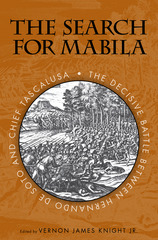2 books by Derry, Linda

Archaeology of Southern Urban Landscapes
Amy L Young
University of Alabama Press, 2000
Groundbreaking essays in urban archaeology highlight the impact of towns and cities on the southern landscape
The rapid growth and development of urban areas in the South have resulted in an increase in the number of urban archaeology projects required by federal and state agencies. These projects provide opportunities not only to investigate marginal areas between the town and countryside but also to recover information long buried beneath the earliest urban structures. Such projects have also created a need for a one-volume update on archaeology as it is practiced in the urban areas of the southeastern United States.
Archaeology of Southern Urban Landscapes will assist practitioners and scholars in the burgeoning fields of urban and landscape archaeology by treating the South as a distinctive social, geographic, and material entity and by focusing on the urban South rather than the stereotypical South of rural plantations. The case studies in this volume span the entire southeastern United States, from Annapolis to New Orleans and from colonial times to the 19th century. The authors address questions involving the function of cities, interregional diversity, the evolution of the urban landscape, and the impact of the urban landscape on southern culture. By identifying the relationship between southern culture and the South's urban landscapes, this book will help us understand the built landscape of the past and predict future growth in the region.
The rapid growth and development of urban areas in the South have resulted in an increase in the number of urban archaeology projects required by federal and state agencies. These projects provide opportunities not only to investigate marginal areas between the town and countryside but also to recover information long buried beneath the earliest urban structures. Such projects have also created a need for a one-volume update on archaeology as it is practiced in the urban areas of the southeastern United States.
Archaeology of Southern Urban Landscapes will assist practitioners and scholars in the burgeoning fields of urban and landscape archaeology by treating the South as a distinctive social, geographic, and material entity and by focusing on the urban South rather than the stereotypical South of rural plantations. The case studies in this volume span the entire southeastern United States, from Annapolis to New Orleans and from colonial times to the 19th century. The authors address questions involving the function of cities, interregional diversity, the evolution of the urban landscape, and the impact of the urban landscape on southern culture. By identifying the relationship between southern culture and the South's urban landscapes, this book will help us understand the built landscape of the past and predict future growth in the region.
[more]

The Search for Mabila
The Decisive Battle between Hernando de Soto and Chief Tascalusa
Edited by Vernon James Knight Jr.
University of Alabama Press, 2009
One of the most profound events in sixteenth-century North America was a ferocious battle between the Spanish army of Hernando de Soto and a larger force of Indian warriors under the leadership of a feared chieftain named Tascalusa. The site of this battle was a small fortified border town within an Indian province known as Mabila. Although the Indians were defeated, the battle was a decisive blow to Spanish plans for the conquest and settlement of what is now the southeastern United States. For in that battle, De Soto’s army lost its baggage, including all proofs of the richness of the land—proofs that would be necessary to attract future colonists. Facing such a severe setback, De Soto led his army once more into the interior of the continent, where he was not to survive. The ragtag remnants of his once-mighty expedition limped into Mexico some three years later, thankful to be alive. The clear message of their ordeal was that this new land, then known as La Florida, could not be easily subjugated.
But where, exactly, did this decisive battle of Mabila take place? The accounts left by the Spanish chroniclers provide clues, but they are vague, so lacking in corroboration that without additional supporting evidence, it is impossible to trace De Soto’s trail on a modern map with any degree of certainty. Within this volume, 17 scholars—specialists in history, folklore, geography, geology, and archaeology—provide a new and encouragingly fresh perspective on the current status of the search for Mabila. Although there is a widespread consensus that the event took place in the southern part of what is now Alabama, the truth is that to this day, nobody knows where Mabila is—neither the contributors to this volume, nor any of the historians and archaeologists, amateur and professional, who have long sought it. One can rightfully say that the lost battle site of Mabila is the predominant historical mystery of the Deep South.
[more]
READERS
Browse our collection.
PUBLISHERS
See BiblioVault's publisher services.
STUDENT SERVICES
Files for college accessibility offices.
UChicago Accessibility Resources
home | accessibility | search | about | contact us
BiblioVault ® 2001 - 2024
The University of Chicago Press









